
11-01-2026 20:35
Hello.A very tiny pyrenomycete sprouting sparsely

12-01-2026 05:24
 Danny Newman
Danny Newman
Cyathicula coronata on Urtica dioicaCataloochee Di

15-12-2025 11:49
 Danny Newman
Danny Newman
ITS sequences from the following two collections B

09-01-2026 17:41
Arnold BüschlenHallo, F. dilatata wird von vielen Bryoparasiten

10-01-2026 20:00
Tom SchrierHi all,We found picnidia on Protoparmeliopsis mur

07-01-2026 22:22
 Danny Newman
Danny Newman
Tatraea sp. on indet. hardwood The Swag, Great Sm

10-01-2026 01:18
 Danny Newman
Danny Newman
cf. Neovaginatispora fuckelii on indet. shrub Pre

07-01-2026 10:24
 Danny Newman
Danny Newman
Pezicula sp. on indet. hardwood Appalachian Highl

09-01-2026 10:08
 Blasco Rafael
Blasco Rafael
Hola, en el mismo habitat que la anteriorRetamaDia

08-01-2026 21:22
 Blasco Rafael
Blasco Rafael
Hola, He recogido esta muestra de Orbilia sobre Re
Diatrype
Gernot Friebes,
22-01-2011 14:53
I often have problems with Diatrypaceae, also with this find. I hope you can give me a hint in the right direction. ;)
It grew on a branch of an oak which was lying on the ground, the stromata are black and effused and have no white endostroma. The ostioles are flat and encircled by a conspicuous darker disc, the perithecia are ovoid or tubular. Asci are slightly IKI positive in KOH 5% + IKI and 8-spored. Spores are tiny with 5-7 x 1,2-1,5 µm.
I think that my find might be near to Diatrype stigma but this species should have a white endostroma and not such encircled ostioles.
Best wishes,
Gernot
Martin Bemmann,
22-01-2011 16:02

Re:Diatrype
Hi Gernot,
could this be Diatrype platystoma? Here is Berles's plate. And compare description at MycoBank ( "discoid ostioles" ). Spores are longer there...
Regards,
Martin
could this be Diatrype platystoma? Here is Berles's plate. And compare description at MycoBank ( "discoid ostioles" ). Spores are longer there...
Regards,
Martin
Gernot Friebes,
22-01-2011 20:44
Re:Diatrype
Hi Martin,
thank you very much for this interesting suggestion! Berle's plate fits very well indeed. However, the descriptions by Vasilyeva & Stephenson (http://www.fungaldiversity.org/fdp/sfdp/17-11.pdf) and Barr et al. (http://www.cybertruffle.org.uk/cyberliber/59575/0048/0533.htm) differ in longer ascospores (as you mentioned) and ± clavate asci. The asci of my collection are longer and smaller than given by Vasilyeva & Stephenson. But then again, the hyaline spores, the discoid ostioles and the IKI positive Asci would fit quite well.
I wonder how "two-layered stroma" and a "diatrypoid configuration" of the ascomata look like, as mentioned by Barr et al. Which other Diatrype-species are there with such conspicuous ostioles?
Best wishes,
Gernot
thank you very much for this interesting suggestion! Berle's plate fits very well indeed. However, the descriptions by Vasilyeva & Stephenson (http://www.fungaldiversity.org/fdp/sfdp/17-11.pdf) and Barr et al. (http://www.cybertruffle.org.uk/cyberliber/59575/0048/0533.htm) differ in longer ascospores (as you mentioned) and ± clavate asci. The asci of my collection are longer and smaller than given by Vasilyeva & Stephenson. But then again, the hyaline spores, the discoid ostioles and the IKI positive Asci would fit quite well.
I wonder how "two-layered stroma" and a "diatrypoid configuration" of the ascomata look like, as mentioned by Barr et al. Which other Diatrype-species are there with such conspicuous ostioles?
Best wishes,
Gernot
Alain GARDIENNET,
22-01-2011 22:12
Re:Diatrype
Dear friends,
At once I believed recognize Diatrype stigmaoides but this one has not such ostiole and possesses white entostroma. I don't know if your species is Diatrype platystoma. This last one is called Graphostoma platystoma (Schwein.) Piroz. 1974.
Alain
At once I believed recognize Diatrype stigmaoides but this one has not such ostiole and possesses white entostroma. I don't know if your species is Diatrype platystoma. This last one is called Graphostoma platystoma (Schwein.) Piroz. 1974.
Alain
Martin Bemmann,
22-01-2011 22:40

Re:Diatrype
Dear Alain,
I recognized as well meanwhile that Graphostroma platystoma is the current name. But I don't have access to the relevant recent publications, beeing it Mycotaxon 107 or Pirozynski 1974...
So D./G. platystoma is only a speculation based on old literature.. (that turned out beeing not too bad in the past) ;-)
Best regards,
Martin
I recognized as well meanwhile that Graphostroma platystoma is the current name. But I don't have access to the relevant recent publications, beeing it Mycotaxon 107 or Pirozynski 1974...
So D./G. platystoma is only a speculation based on old literature.. (that turned out beeing not too bad in the past) ;-)
Best regards,
Martin
Jacques Fournier,
22-01-2011 22:59

Re:Diatrype
Dear all,
I am a bit late but I agree it is G. platystoma, the ostioles are characteristic. Main differences with Diatrypaceae are the bipartite stroma (a loosening ectostroma is visible at early stages), absence of entostroma, short-stipitate asci and almost cylindrical spores, along with a xylariaceous anamorph. Variations in ostiolar shape and spore dimension might involve the separation of several cryptic species, but so far one name is retained.
It can occur on various hosts but in my region it seems to prefer Castanea on which it can be very abundant and often easily confused with Diatrype stigma. Be careful!
Cheers,
Jacques
I am a bit late but I agree it is G. platystoma, the ostioles are characteristic. Main differences with Diatrypaceae are the bipartite stroma (a loosening ectostroma is visible at early stages), absence of entostroma, short-stipitate asci and almost cylindrical spores, along with a xylariaceous anamorph. Variations in ostiolar shape and spore dimension might involve the separation of several cryptic species, but so far one name is retained.
It can occur on various hosts but in my region it seems to prefer Castanea on which it can be very abundant and often easily confused with Diatrype stigma. Be careful!
Cheers,
Jacques
Gernot Friebes,
23-01-2011 00:16
Re:Diatrype
Hi,
I also read that Graphostroma platystoma is the current name but Vasilyeva & Stephenson discuss why they still call it Diatrype platystoma. Anyhow, thank you Jacques for confirming this species and for your interesting explanations! I found it in the very south of Austria so maybe it's thermophile species.
Best wishes,
Gernot
I also read that Graphostroma platystoma is the current name but Vasilyeva & Stephenson discuss why they still call it Diatrype platystoma. Anyhow, thank you Jacques for confirming this species and for your interesting explanations! I found it in the very south of Austria so maybe it's thermophile species.
Best wishes,
Gernot
Jacques Fournier,
23-01-2011 16:08

Re:Diatrype
Hi Gernot,
the separation of Graphostroma from the Diatrypaceae is also supported by all phylogenetic studies in which it has been included.
Just like you I suspect a thermophilic preference for this fungus.
All my best!
Jacques
the separation of Graphostroma from the Diatrypaceae is also supported by all phylogenetic studies in which it has been included.
Just like you I suspect a thermophilic preference for this fungus.
All my best!
Jacques
Thomas Læssøe,
24-01-2011 13:50
Re:Diatrype
I have found the same taxon twice on oak in Sweden - also with deviating spore measurements. There is a type based on an Italian specimen cited in synonymy of platystoma, this could constitute a name for this taxon. I believe Björn Nordén in Göteborg also have some data on the Swedish specimens.
best w
best w
Gernot Friebes,
24-01-2011 17:36
Re:Diatrype
Thank you, Jacques and Thomas for this interesting further information.
Best wishes,
Gernot
Best wishes,
Gernot
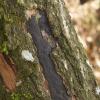
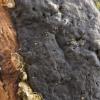
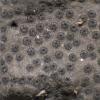
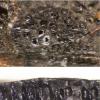
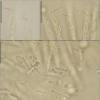
 14001.pdf
14001.pdf